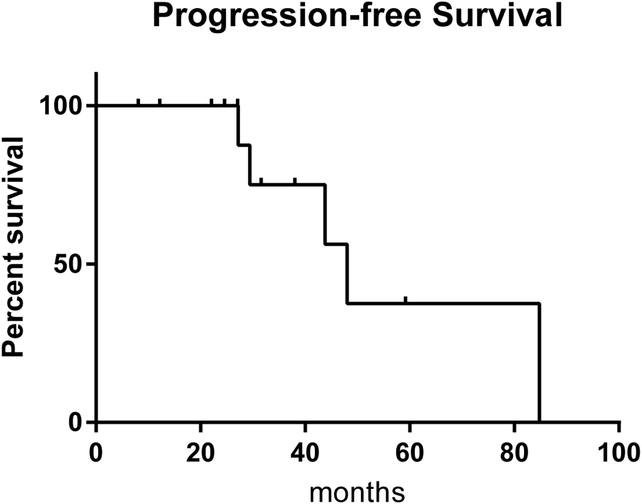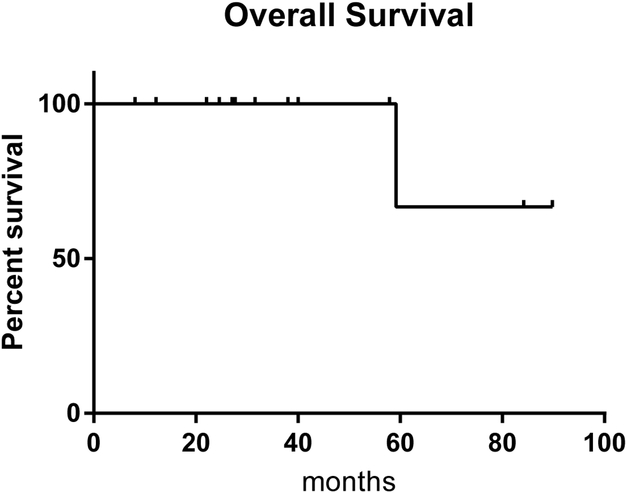Figure 1. Progression-Free and Overall Survival of Elderly PCNSL Patients who Received Low-Dose Lenalidomide Maintenance After Methotrexate-Based Induction Therapy.
A. With median overall follow-up of 31.64 months, median progression-free survival has not been reached. Of the 5 patients who progressed thus far, 3 responded to salvage therapy and are maintained in second complete remission after repeat institution of maintenance lenalidomide at 5-10 mg/day (Patients 1, 2 and 5).
B. Overall survival. Thus far, 1 primary central nervous system lymphoma patient in this series has died. Median Karnofsky performance status at last follow-up is 100 (range, 50-100). Disease progression in Patient 1 resolved with vitrectomy and the patient resumed maintenance lenalidomide at 5 mg/day. Patient 2, who achieved only a partial response after acute renal failure with MT-R (methotrexate, temozolomide, rituximab) induction, exhibited stable intraocular lymphoma with lenalidomide maintenance for 40 months, before disease progression in the right occipital lobe. He received re-induction immunochemotherapy with MT-R and subsequently resumed lenalidomide at the higher dose of 10 mg/day, with remission now exceeding 24 months. Patient 4, who had progression after 39 months of lenalidomide, received salvage focal irradiation followed by pomalidomide. Patient 5 had isolated intraocular relapse after 65 months of lenalidomide and received salvage ocular irradiation at progression and resumed maintenance lenalidomide. Patient 11 relapsed with isolated extra-central nervous system disease (left leg) 9 months after discontinuation of maintenance lenalidomide.


